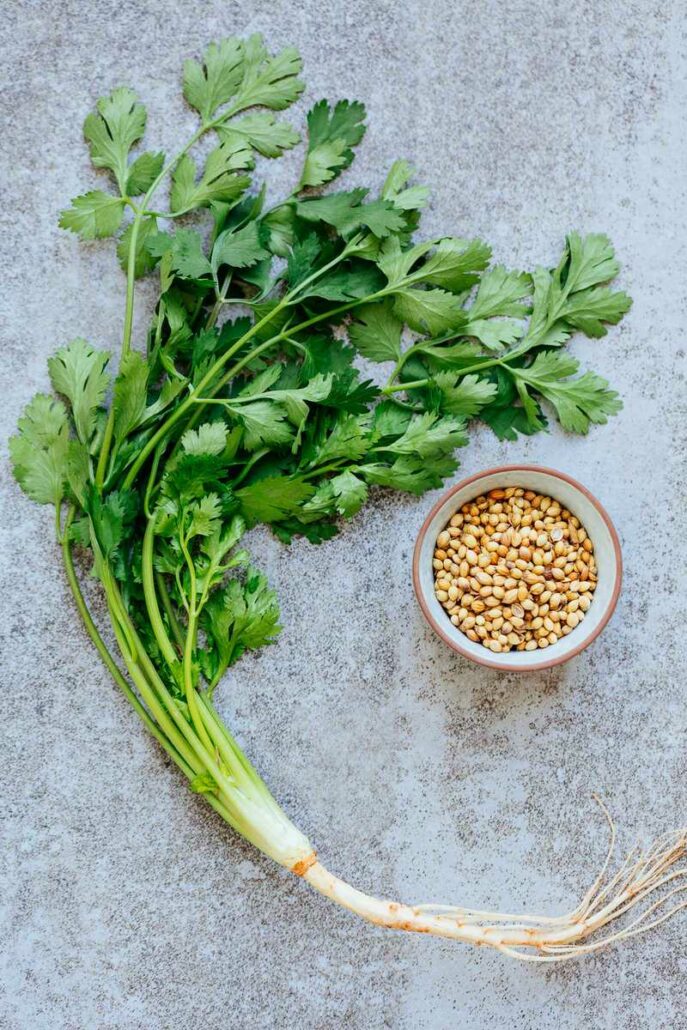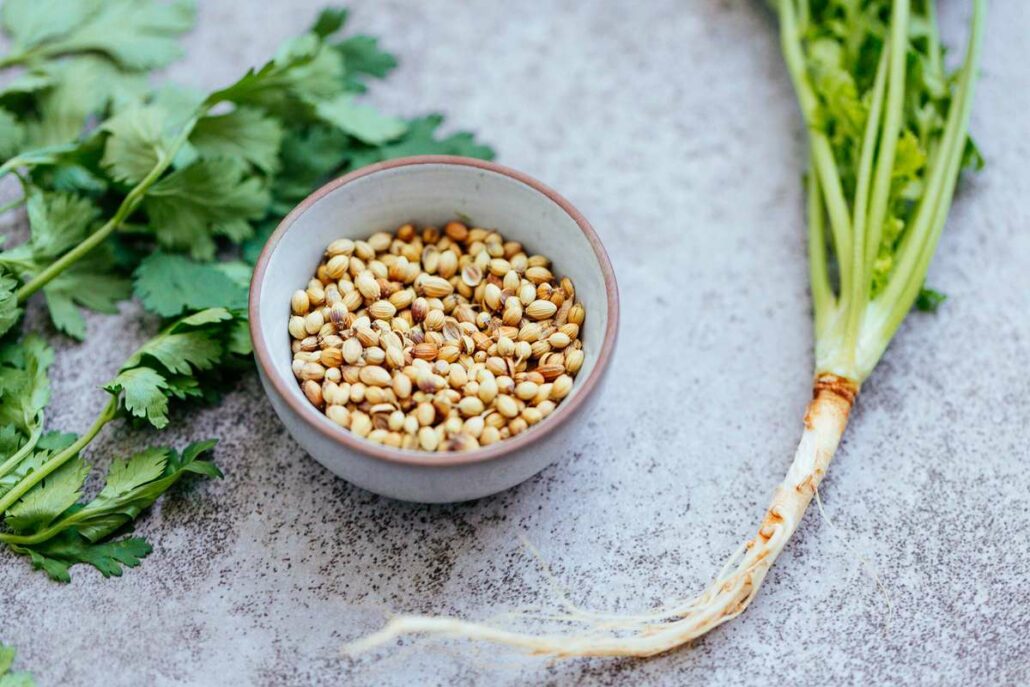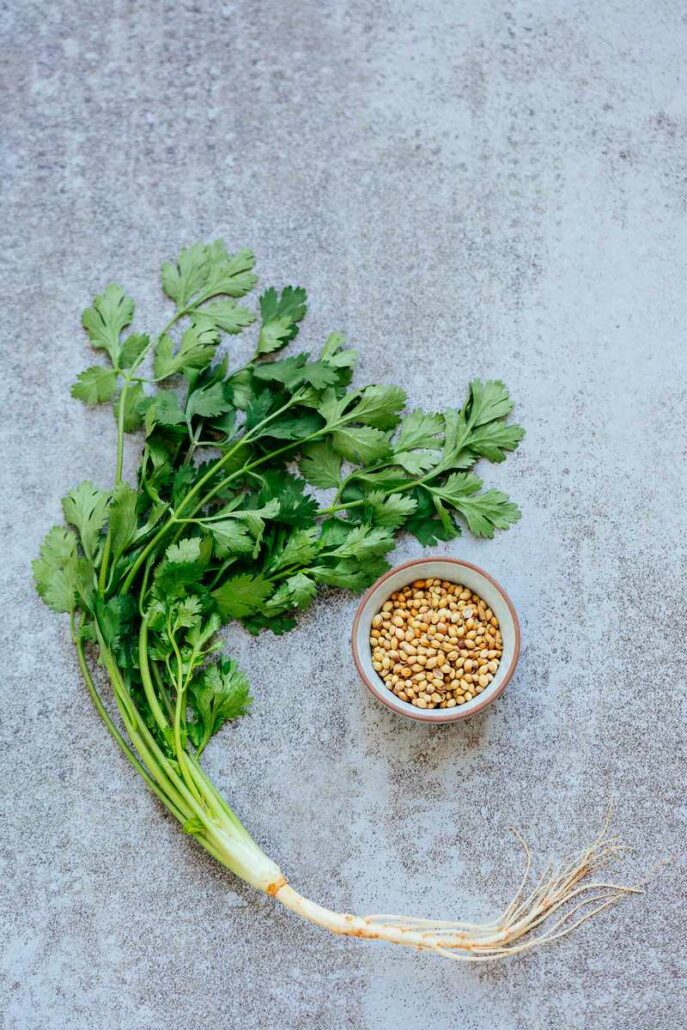Coriander
While the dried coriander fruits are popular in many spice blends worldwide, the opinons about fresh coriander differ like about hardly any other product, because you either love it or hate it. Europeans often find the flavour soapy and unpleasant, while it is precisely its extraordinary aroma that is sought after in Asia and Latin America. However, regular consumption of fresh coriander can also change sensory perception for the better. So don’t write it off just yet, because coriander is an important ingredient in many dishes and gives them the finishing touch both visually and taste-wise.
Cultivation & Botany
Nicknames like “bug dill” probably come from the Greek word “koris” for “bug” and “aneson” for “dill”. This name is most likely derived from the scent of the fresh plant and the immature seeds, which reminds some people of the unpleasant smell of various bug species. The name “cilantro”, which is also common in English, originally refers to the long coriander used mainly in Latin America. Other names are “Arabic parsley”, “Chinese parsley” or “Indian parsley”. These names are due on the one hand to the visual similarity to flat-leaf parsley, but also to the similar way in which it is used.
Like parsley or dill, coriander belongs to the so-called umbelliferous plants. Almost all components of the plant, namely coriander fruits, leaves and roots, are used in cooking. However, the seeds and leaves differ greatly in taste, which is why they cannot simply be substituted for each other in cooking.
The temporal and local origin of coriander is difficult to classify, as evidence of the use of the spice can be found in numerous local and cultural circles. For example, coriander was found on a 5000-year-old clay tablet of a Babylonian king or in the tomb of Tutankhamen in ancient Egypt. However, its actual area of origin is thought to be the eastern Mediterranean. Today it grows almost everywhere, as it is quite easy to cultivate, but it is especially cultivated in regions where it is also very popular in the kitchen. While in Mexico, North Africa, Vietnam and Thailand, for example, the leaves and roots are also used, in Europe the coriander fruits are particularly important.
Aroma & Usage
Coriander fruits taste slightly nutty. Their aroma can be combined in many ways, which is why they are used as an ingredient in many spice mixtures such as curry powder, garam masala, berbere, ras el-hanout or baharat. They have also long been used in western cuisine as a spice for bread and pastries.
Coriander leaves, on the other hand, have an intense freshness and are popular in the kitchens of India, China, Thailand and Vietnam to season soups, curries and salads. Coriander roots are mainly used for Thai curry pastes. Latin American cuisine uses fresh coriander for ceviche, guacamole and numerous types of salsas. But it is also popular in Georgia or Yemen for preparing the spice paste “Zhoug”.
At ConFusion, you learn the correct use of coriander in several courses: while “Thai curries“, for example, are made with coriander roots and leaves, the coriander fruit is used as a component of Garam Masala in “Indian spice cuisine“.










